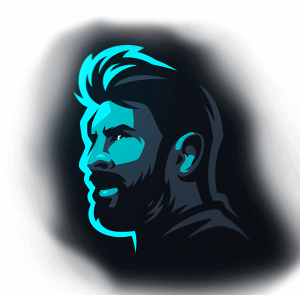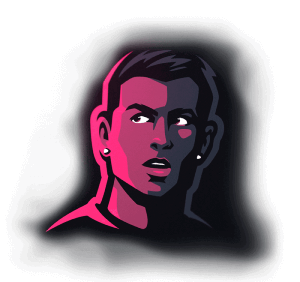Manchester: The Formative Years
Cristiano Ronaldo began his career in midfield as a traditional winger, using his blistering pace and immense trickery to run at and beat defenders, before looking to provide for the striker(s). At some point though, he transformed from tricky winger to relentless goalscorer, so let's look at how his position and role evolved in his early years.
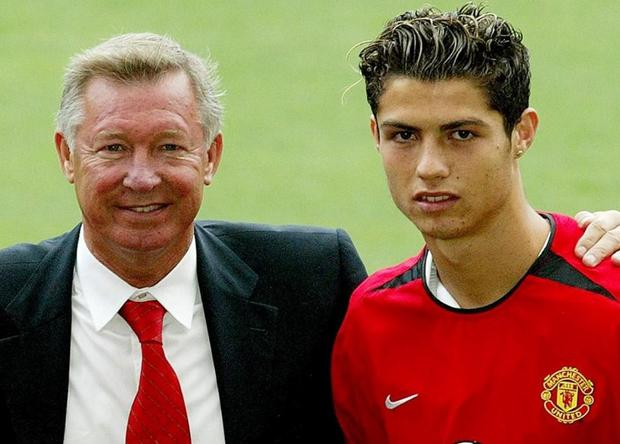 Sir Alex Ferguson brings a fresh faced Cristiano Ronaldo to Manchester
Sir Alex Ferguson brings a fresh faced Cristiano Ronaldo to Manchester
When Ronaldo went to Manchester United in 2003/04, he was usually on the right hand side of a 4-5-1, with Giggs on the opposite flank. Their primary job was to feed the central striker, Ruud van Nistelrooy - a prolific poacher who expertly finished moves but had very little involvement in anything else.
With van Nistelrooy as the focal point of the attack, link-up play was limited, meaning Ronaldo's goal threat was largely restricted to long shots and set-pieces (of his 6 goals in his debut PL season, 3 were outside the box and 2 were headers).
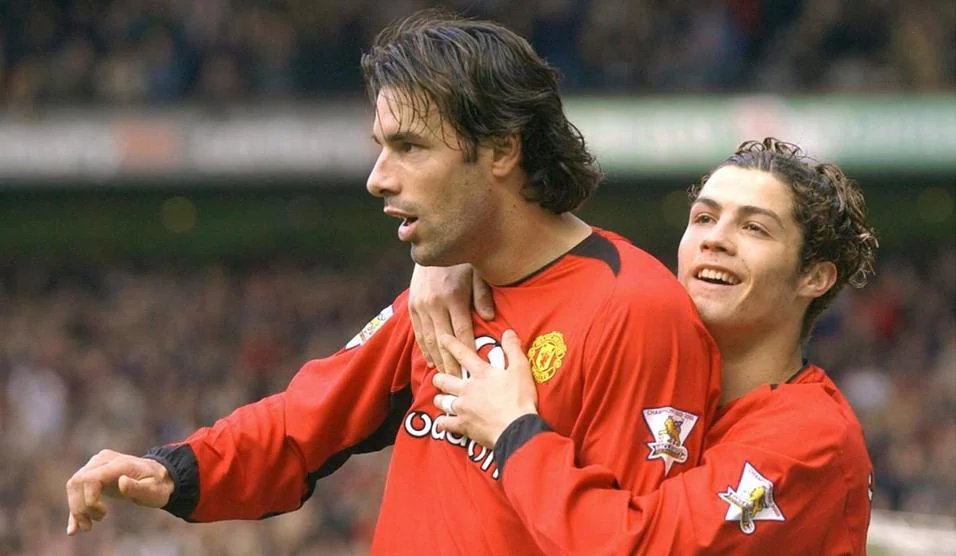 Cristiano Ronaldo's early role was to play provider for Ruud van Nistelrooy
Cristiano Ronaldo's early role was to play provider for Ruud van Nistelrooy
His main role was to beat defenders on the wing and feed RVN; a role he seemed a perfect fit for with his frightening pace and skill.
In his first few seasons in England however, he started to gain a reputation as a showman who often made one step-over too many, didn't always release the ball when he should have, and who liked to make the most of the rough treatment he would often receive from defenders.
His own teammates shared this frustration at times, with Rio Ferdinand stating: "We all saw his huge potential. When he came here, his first thought was to entertain. We wanted to win. We knew that if he had an end product we had a far better chance of being successful... for want of a better word, we were kicking it out of him, the entertainment factor, to get goals and assists.”
In his first couple of seasons in Manchester he scored 6 and 9 goals in all competitions, which increased to 12 in 2005/06. He was now an important part of Man Utd's attack, but was still playing a supporting role - not yet their primary goal threat.
The Transition: from showman to phenomenon
At the 2006 World Cup, after an incident with Wayne Rooney (in which he was perceived to have got Rooney sent off before winking at his dugout), Ronaldo became public enemy number one in England and was a target for crowd abuse the following season.
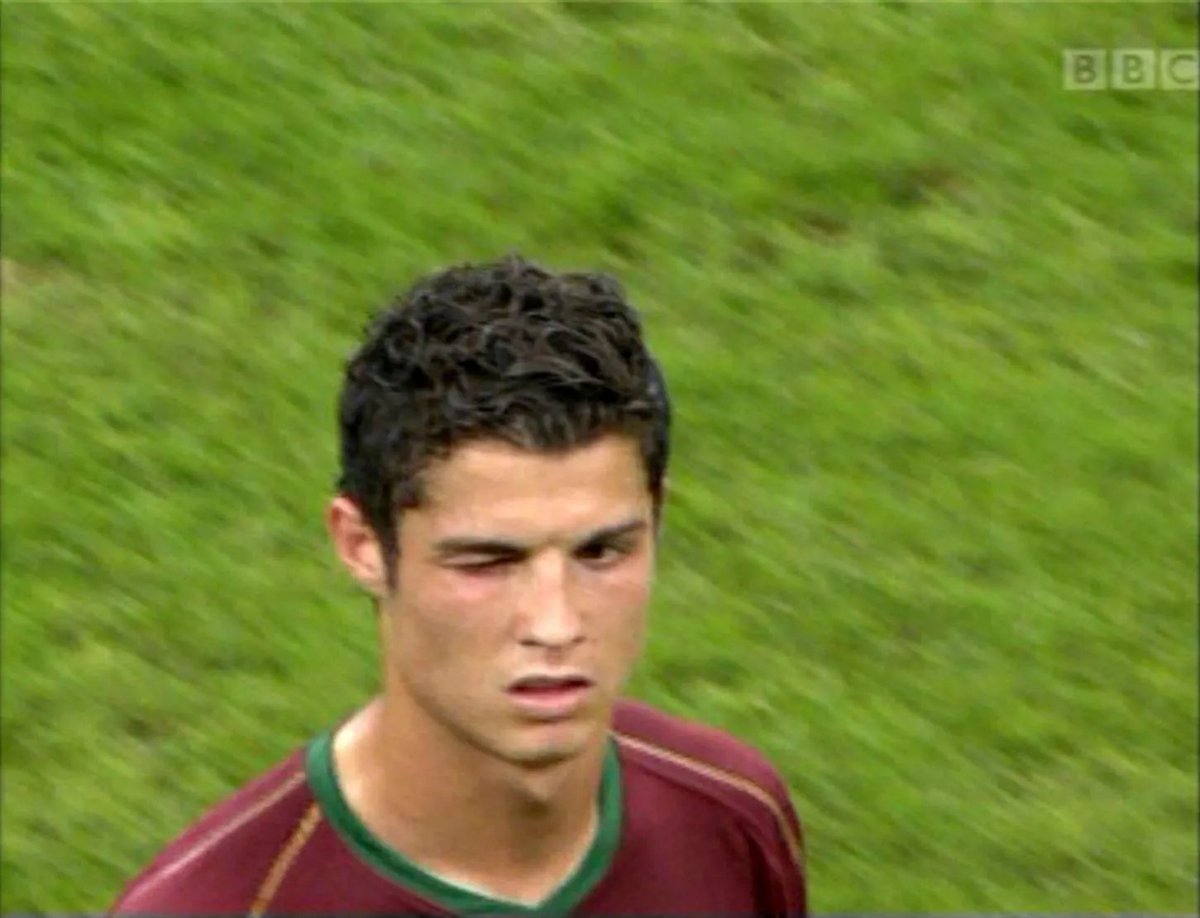 Ronaldo's infamous wink at the 2006 World Cup following Wayne Rooney's dismissal
Ronaldo's infamous wink at the 2006 World Cup following Wayne Rooney's dismissal
Following the tournament, Cristiano was rumoured to be wanting a move to Real Madrid before Alex Ferguson travelled to Portugal to ensure him the Manchester United team would be built around him following Ruud van Nistelrooy's departure.
Ronaldo spent the summer bulking up and returned to the Premier League a different beast, determined to use the crowd hatred as fuel. This was really the start of Ronaldo's transition to a different player entirely, more concerned with directness and efficiency than tricks and skills. Now when he was scythed down by opposing defenders, he would make a point of brushing it off with minimal fuss rather than putting on a show of faux-distress. This together with a marked increase in quality and final impact started to turn the crowd perception around, from hate and ridicule to awe and respect.
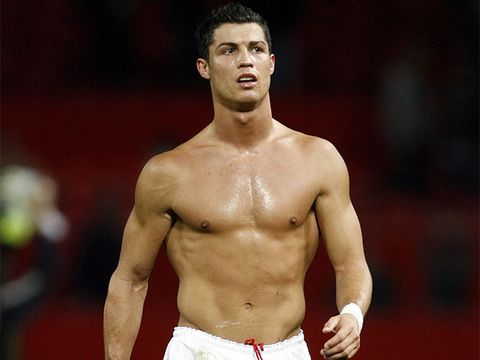 Ronaldo returned to England a different beast after the 2006 World Cup
Ronaldo returned to England a different beast after the 2006 World Cup
After 3 years without a league title, Man Utd really started to dominate in 2006/07 following the departure of van Nistelrooy who, despite his prolific goalscoring, was seen to be restricting United's attacking threat.
It was this season that Ronaldo gained a lot more freedom as an attacker. His primary position was on the right wing in a 4-4-2, but it was a dynamic counter-attacking system in which the front 4 (usually Ronaldo, Giggs, Saha, Rooney) would interchange.
After United won their first game of 06/07 4-0 against Fulham, Rooney said “With Ruud gone, the manager wants us to work on a style of football that will blow everyone away. He sets up the team to have bags of pace with myself, Ronaldo and Louis Saha up front. We're being told to counter-attack at speed - he reckons teams will find it impossible to play against us.”
There was movement, interplay and unpredictability in the team's attack; a stark contrast to the previous attack built around van Nistelrooy.
In this season, Ronaldo almost doubled his previous goal tally to 17 in the Premier League (United's top scorer and 3rd overall), with 23 goals in all competitions.
He was now Manchester United's primary goal threat, with the other attackers, including Rooney, taking more of a backseat.
Ronaldo the Goal Machine
In 2007/08, Ronaldo completed his transformation. From tricky winger who sometimes tried to do too much, to unrelenting goalscorer, and best player in the world.
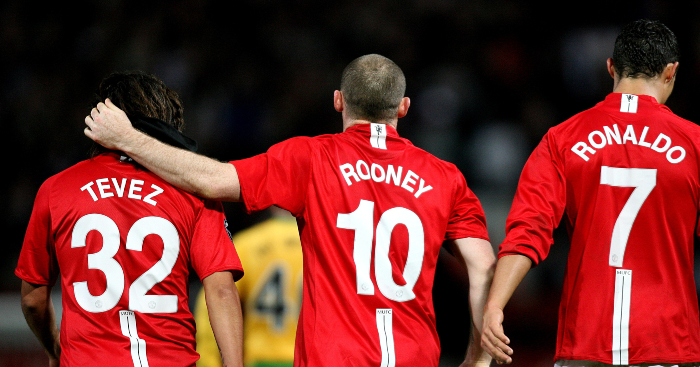 Tevez, Rooney and Cristiano Ronaldo formed a formidable attack from the 2007/08 season
Tevez, Rooney and Cristiano Ronaldo formed a formidable attack from the 2007/08 season
Tevez joined the attack that season and formed an incredibly effective attacking trident with Rooney and Ronaldo. Tevez and Rooney were similar players, tenacious battlers prepared to do the running out of possession, but also brilliant at the interplay aspect and selfless enough to act as willing support acts for the ruthless Ronaldo.
Cristiano finished with a record-equalling 31 Premier League goals, with Tevez on 14 and Rooney 12. This goal return coupled with a first Champions League triumph earned Ronaldo his first Ballon d'Or.
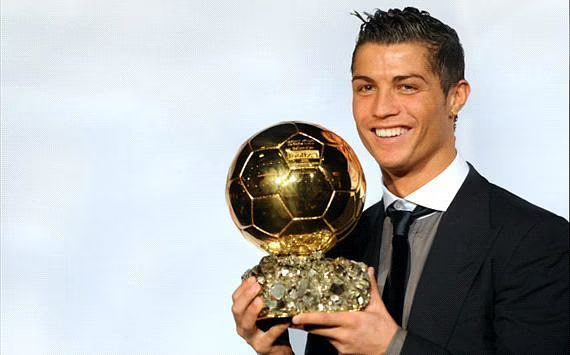 Cristiano Ronaldo won the first of his five Ballons d'Or in 2008
Cristiano Ronaldo won the first of his five Ballons d'Or in 2008
Ronaldo's starting position continued to be on the right for the majority of his latter United years, although the positioning of the attack was fluid in nature. In Europe, Sir Alex Ferguson tended to opt for a different system with Cristiano as the centre-piece of a front three, but again this forward line would constantly interchange which caused havoc in the opposition defence.
How you categorise Ronaldo's position during his first Manchester United spell isn't black-and-white. The game has changed a lot since then, with wide forwards typically being classed as midfielders at the time (particularly in England) until inverted wingers became more prevalent towards the end of the decade and became their team's main goal threat.
Even now the likes of Salah and Mane still get categorised as midfielders in certain situations (such as the Fantasy Premier League game) because they play on the wing. In the simplest terms, Ronaldo was a more traditional winger from 02/03 to 05/06 (a midfielder), and then more of a wide forward from 06/07 onwards.
From Manchester to Madrid and From Right to Left
Ronaldo did start several games for Manchester United on the left, but it was only when he went to Real Madrid that this became his primary starting position. The now commonplace inverted winger role theoretically allowed Ronaldo to take many more shots on his strong foot, and unlocked another level to his already elite goalscoring.
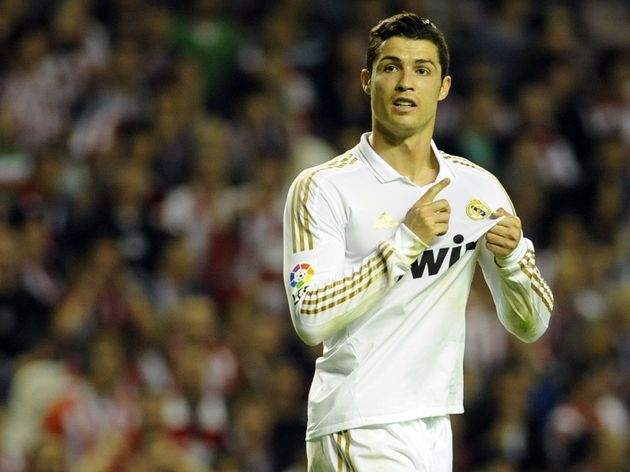 Cristiano Ronaldo moved to Real Madrid in 2009, and somehow raised his level even higher
Cristiano Ronaldo moved to Real Madrid in 2009, and somehow raised his level even higher
He scored an astonishing 252 goals in 246 games in his first five seasons in Madrid, operating from the left wing but with plenty of freedom to move into central areas. He was also given license to stay high up the pitch during defensive phases, enabling the team to launch deadly counter-attacks after regaining possession.
Ronaldo adjusted in the second half of his Madrid stint, soon gaining a reputation as a pure penalty-box number 9 due to his tendency to get on the end of moves in the box.
It's true that Ronaldo became less and less involved in the build-up play as his time at Madrid progressed (and increasingly more involved in the box), but he was only really a true centre-forward in his last season or two at Real.
He still gravitated to the left wing during build-up play, but spent much more time centrally than he used to with Benzema dropping deep and Bale drawing defenders to the right flank, creating the space for Ronaldo to move into.
The Juventus Years
This perception of Ronaldo as a deadly centre-forward stuck throughout his time in Italy, despite actually reverting to a version of himself more reminiscent of his earlier Madrid years, having far more involvement on the left wing than he did towards the end of his time at Real Madrid.
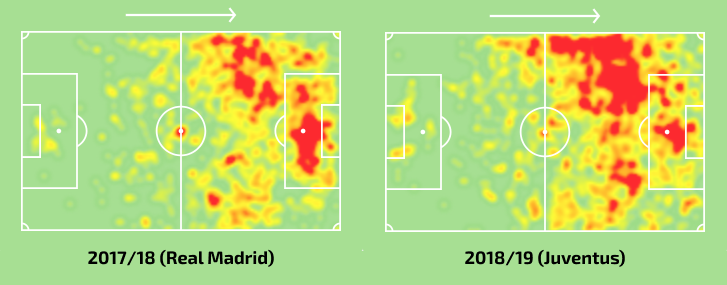 Ronaldo's heatmap shows the difference in role between his final Real Madrid season and his first Juventus season
Ronaldo's heatmap shows the difference in role between his final Real Madrid season and his first Juventus season
This is reflected not only in his heatmaps, but also in his successful dribble numbers which had been on a gradual continuous decline as you would expect with age. Obviously nowhere near his peak dribbling level, but still we saw a clear increase on his final seasons for Real.
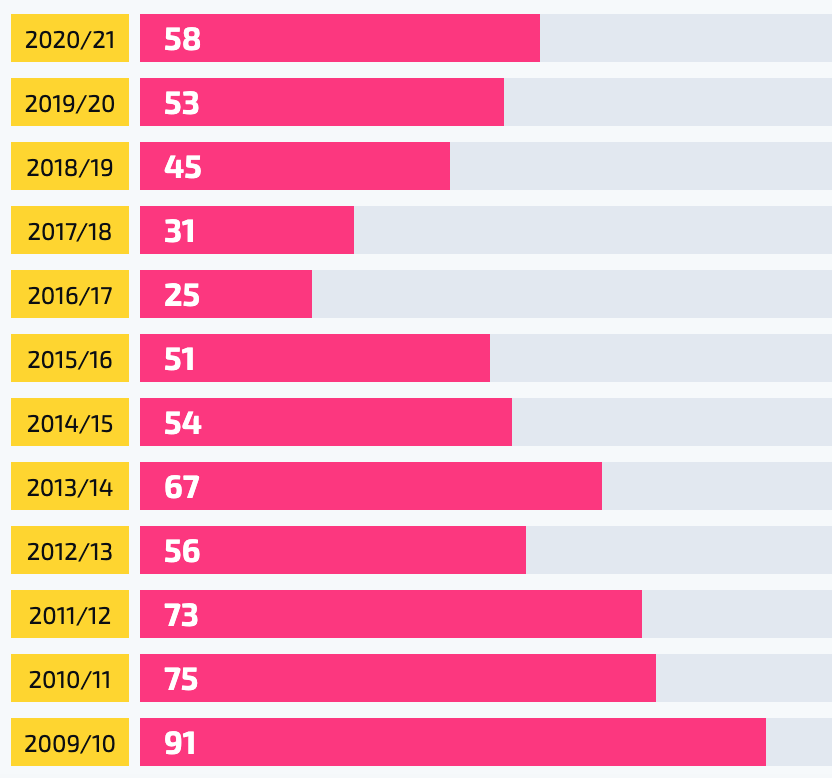 Ronaldo's successful dribble numbers in league games gradually declined until his move to Serie A
Ronaldo's successful dribble numbers in league games gradually declined until his move to Serie A
Although he appeared an orthodox striker on the teamsheet, in reality he was mainly operating from the left wing, often attempting to carry the ball into the box. He did of course still assume the deadly number 9 role for attacks that came from the opposite flank, using his exceptional movement to get on the end of balls into the box.
Full Circle: Back to Manchester
As Ronaldo desperately sought a move away from the declining Juventus in the summer of 2021, it was his beloved Manchester United who swooped in when it looked certain that he was heading to the blue side of Manchester!
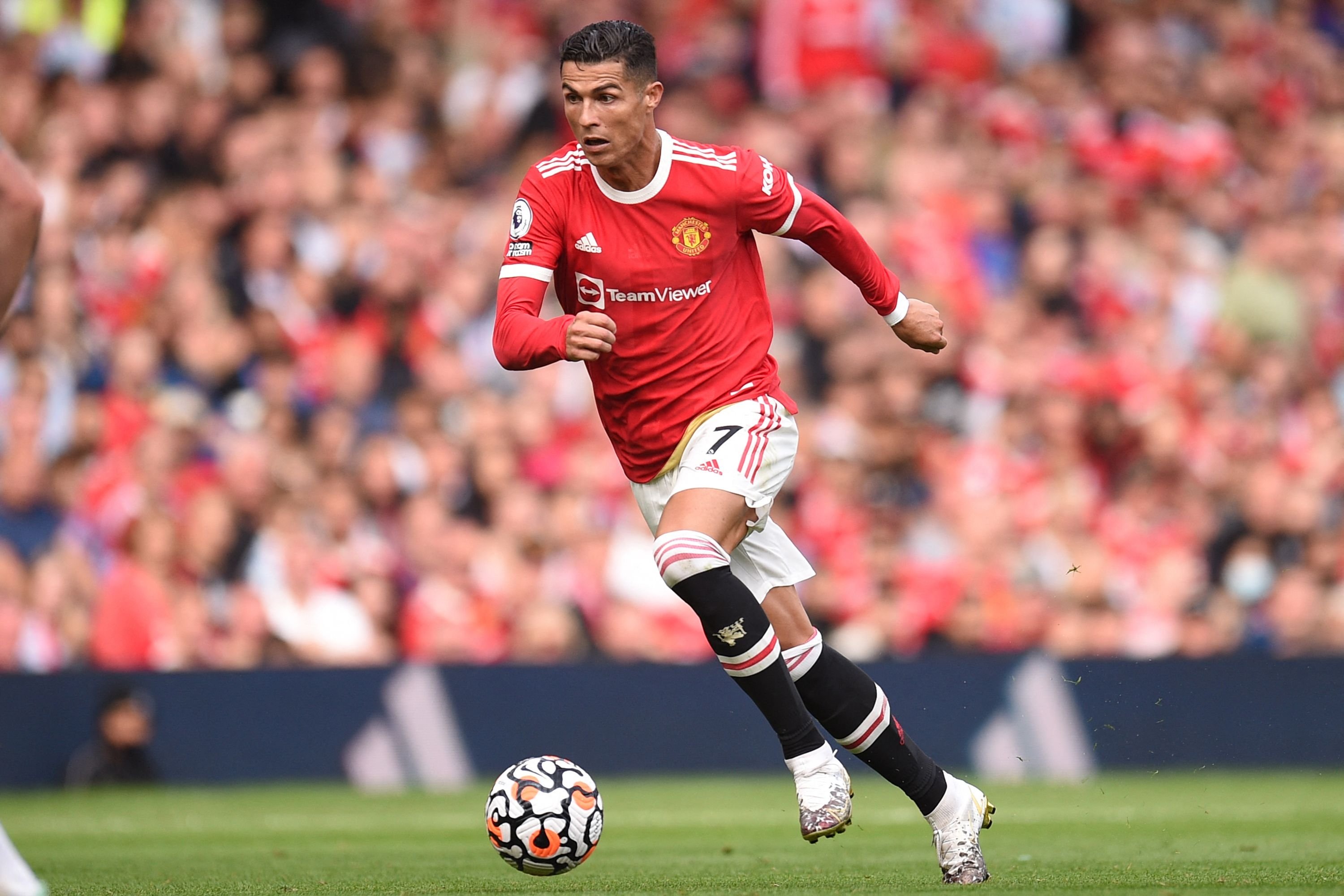 Cristiano Ronaldo returned to Old Trafford in 2021 to incredible fanfare
Cristiano Ronaldo returned to Old Trafford in 2021 to incredible fanfare
With the penalty box poacher perception of Ronaldo still very much in tact, he has been primarily deployed as an out-and-out centre-forward, which isn't as natural a position to Cristiano as some may think. Obviously he is deadly in that role in front of goal, but he has a natural tendency to drift into the wide position.
At the half way point of the season, Ronaldo's goal return has been a very healthy 14 in 22 games, his involvement in build-up play has been more minimal than perhaps it ever has been, and Manchester United's overall play has been really troubling at times, leaving them languishing in 7th place. This particular chapter in Cristiano's career clearly has a lot left to be written, and it will be intriguing to see how it ultimately ends.
